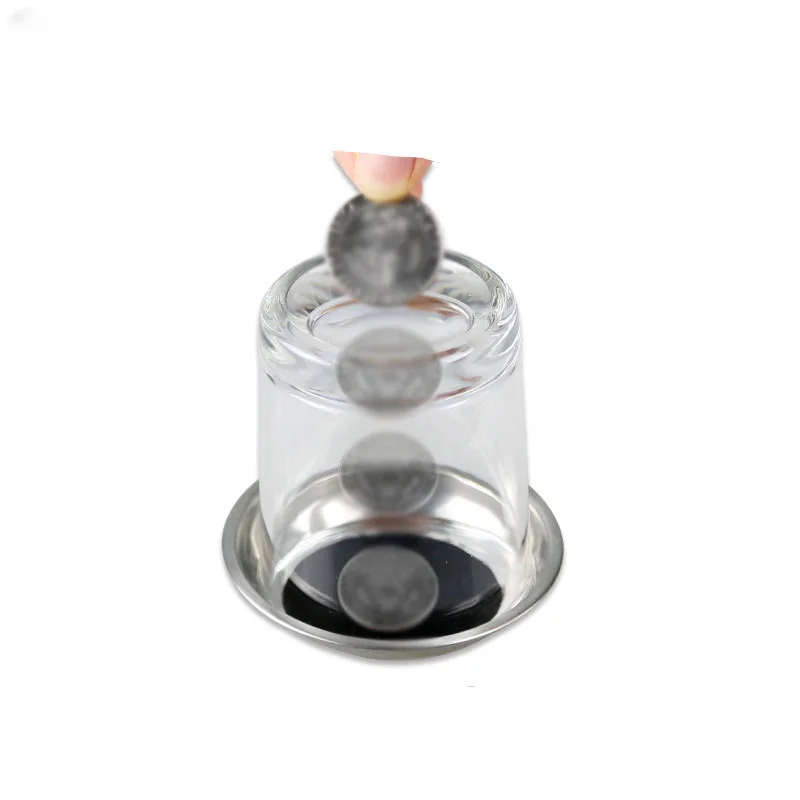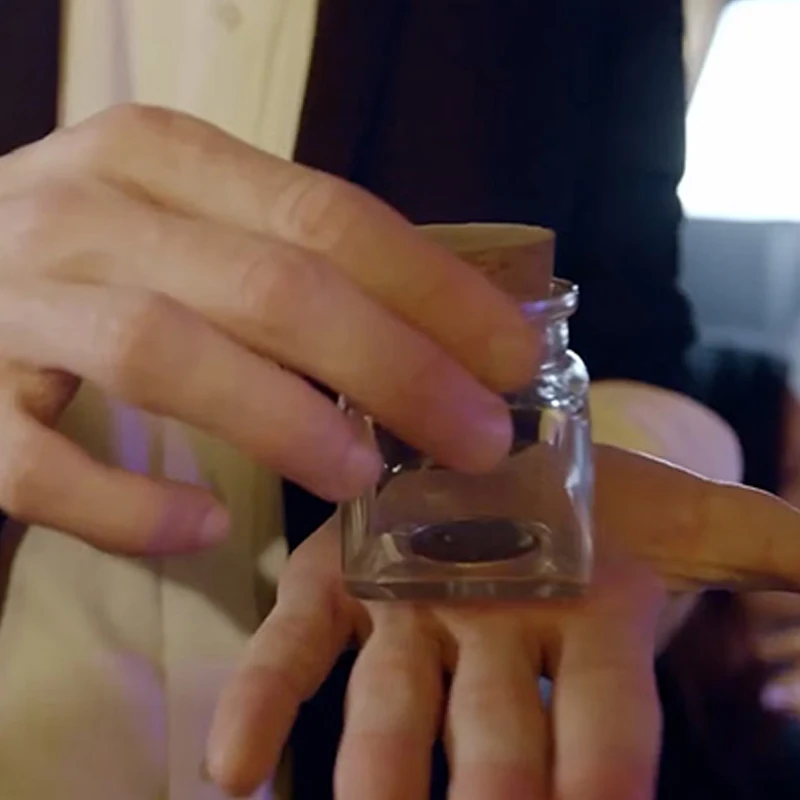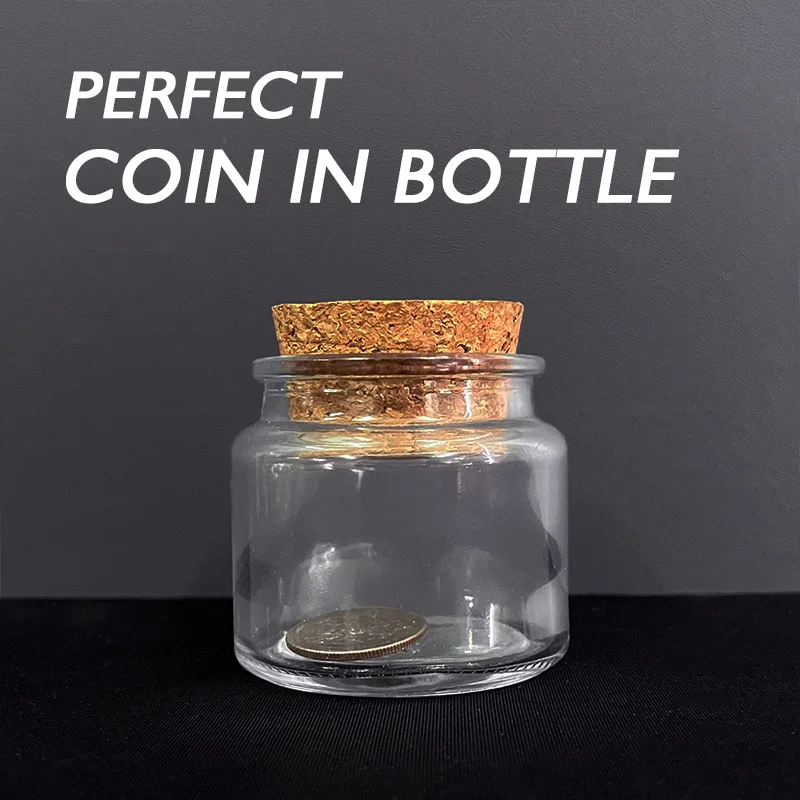Magic tricks have long fascinated audiences, captivating them with seemingly impossible feats. One such illusion that continues to astound spectators is the magic coin into glass bottle trick. This mystifying performance leaves viewers wondering how a solid coin can pass through the narrow neck of a glass bottle. Therefore, understanding the mechanics and methods behind this trick enhances your appreciation and ability to perform it. This comprehensive guide explores the history, techniques, and presentation of the magic coin into glass bottle illusion. By following these insights, you can master this captivating trick and wow your audience with your magical prowess.
History and Origins of the Trick
The magic coin into glass bottle trick has deep roots in the history of magic, captivating audiences for generations. Therefore, exploring its origins provides valuable context and appreciation.
Early Performances
Early performances of the magic coin into glass bottle trick can be traced back to the 19th century. Magicians during this era delighted audiences with simple yet astonishing illusions, often using everyday objects. The concept of passing a solid object through an impervious barrier intrigued spectators and showcased the magician’s skill and creativity. As magic evolved, magicians refined and innovated the trick, incorporating new techniques and methods. Therefore, recognizing the early performances of this trick highlights its enduring appeal and historical significance.
Modern Adaptations
Modern adaptations of the magic coin into glass bottle trick continue to capture the imagination of audiences. Contemporary magicians utilize advancements in materials and technology to enhance their performances, creating even more convincing illusions. Innovations in gimmicks and props have allowed magicians to execute the trick with greater precision and versatility. The timeless nature of the illusion ensures its continued popularity in magic shows and performances around the world. Therefore, understanding modern adaptations emphasizes the trick’s ongoing relevance and evolution in the world of magic.

Techniques and Methods Behind the Illusion
Executing the magic coin into glass bottle trick requires mastery of specific techniques and methods. Therefore, exploring these techniques helps demystify the illusion and enhances your ability to perform it.
Sleight of Hand
Sleight of hand is a fundamental technique used in the magic coin into glass bottle trick. Mastery of hand movements and misdirection is crucial for creating the illusion. Magicians often use techniques such as palming, false transfers, and finger manipulation to secretly move the coin. Practicing these moves with precision and fluidity ensures the trick appears seamless and convincing to the audience. Therefore, recognizing the importance of sleight of hand techniques ensures a polished and effective performance.
Gimmicked Bottles
Gimmicked bottles are specialized props designed to facilitate the magic coin into glass bottle trick. These bottles have hidden mechanisms, such as secret compartments or flexible necks, that allow the coin to appear inside the bottle. Using a gimmicked bottle simplifies the trick and reduces the reliance on complex sleight of hand. However, the magician must still execute the illusion with skill and timing to maintain its mystique. Therefore, understanding the role of gimmicked bottles enhances the magician’s ability to perform the trick successfully.
Step-by-Step Guide to Performing the Trick
Performing the magic coin into glass bottle trick involves a series of carefully executed steps. Therefore, exploring a step-by-step guide ensures a structured and effective approach.
Preparation and Setup
Preparation and setup are crucial for ensuring the trick’s success. Begin by selecting a suitable coin and gimmicked bottle. Ensure the coin fits comfortably within the bottle’s secret mechanism. Set up your performance area, ensuring good visibility and minimal distractions. Practice the trick several times to familiarize yourself with the props and refine your movements. Therefore, recognizing the importance of preparation and setup ensures a smooth and confident performance.
Initial Presentation
The initial presentation sets the stage for the illusion. Start by showing the audience the coin and the empty bottle, allowing them to inspect both objects. Emphasize the solidity of the coin and the narrow neck of the bottle, reinforcing the impossibility of the trick. Engage the audience with a captivating narrative or patter that builds suspense and curiosity. Therefore, understanding the significance of the initial presentation ensures audience engagement and sets the tone for the trick.

Executing the Illusion
Executing the illusion requires precision, timing, and effective misdirection. Therefore, exploring the execution phase helps ensure a flawless and convincing performance.
Misdirection Techniques
Misdirection is key to keeping the audience’s attention away from the magician’s secret actions. Use gestures, eye contact, and engaging dialogue to direct the audience’s focus. Timing is crucial; the magician must perform the secret moves during moments of heightened attention or distraction. Practicing misdirection techniques ensures seamless execution and enhances the trick’s overall impact. Therefore, recognizing the importance of misdirection emphasizes its role in creating a successful illusion.
Completing the Trick
Completing the trick involves the final reveal, where the coin appears inside the glass bottle. With the coin secretly positioned, make a dramatic gesture or magic word to signify the moment of the “impossible” occurrence. Slowly reveal the coin inside the bottle, ensuring the audience witnesses the full magical effect. This final reveal should be executed with confidence and theatrical flair, leaving a lasting impression on the audience. Therefore, understanding how to complete the trick ensures a powerful and memorable conclusion.
Tips for Enhancing Your Performance
Enhancing your performance involves refining techniques and incorporating additional elements to elevate the trick. Therefore, exploring these tips helps create a captivating and polished presentation.
Practicing Timing and Precision
Practicing timing and precision is essential for a flawless performance. Repeatedly rehearse the trick, focusing on the coordination of sleight of hand, misdirection, and theatrical elements. Fine-tune your movements to ensure they appear natural and fluid, minimizing any suspicion. Consistent practice builds confidence and allows you to execute the trick with precision. Therefore, recognizing the importance of timing and precision ensures a seamless and convincing performance.
Adding Theatrical Elements
Adding theatrical elements, such as storytelling, music, and lighting, enhances the overall experience for the audience. Craft a compelling narrative that complements the illusion and engages the audience emotionally. Background music can create an atmosphere of mystery and suspense, amplifying the impact of the trick. Adjusting lighting effects can highlight key moments and create visual drama. Therefore, understanding how to incorporate theatrical elements ensures a more dynamic and captivating performance.

Common Mistakes and How to Avoid Them
Being aware of common mistakes and knowing how to avoid them is crucial for a successful performance. Therefore, exploring potential pitfalls helps ensure a smooth and effective illusion.
Rushing the Trick
Rushing the trick can compromise its impact and increase the likelihood of errors. Take your time to execute each step with precision, allowing the audience to fully appreciate the illusion. Pacing your performance ensures you have control over every aspect of the trick. Practicing patience and restraint enhances your overall presentation. Therefore, recognizing the importance of avoiding rushing ensures a well-executed and impactful performance.
Overcomplicating the Method
Overcomplicating the method can lead to unnecessary confusion and mistakes. Stick to simple and effective techniques that achieve the desired result. Focus on mastering the fundamentals of sleight of hand and misdirection before incorporating advanced moves. Simplifying your approach ensures consistency and reliability in your performance. Therefore, understanding the pitfalls of overcomplicating the method emphasizes the value of simplicity and mastery.
Conclusion
Understanding the magic coin into glass bottle illusion involves exploring its history, techniques, execution, and performance enhancements. Proper knowledge ensures a captivating and effective magic trick.
Exploring elements like early performances, modern adaptations, and sleight of hand techniques provides valuable insights into the trick’s evolution and mechanics. Recognizing the importance of preparation, misdirection, and theatrical elements further enriches the understanding.
By engaging with tips for avoiding common mistakes and enhancing your performance, you can ensure a polished and memorable illusion. Therefore, whether you are a novice magician or a seasoned performer, understanding these aspects offers practical and valuable insights. Embrace the opportunity to master the magic coin into glass bottle trick, knowing you have the knowledge and resources to amaze and enchant your audience!
